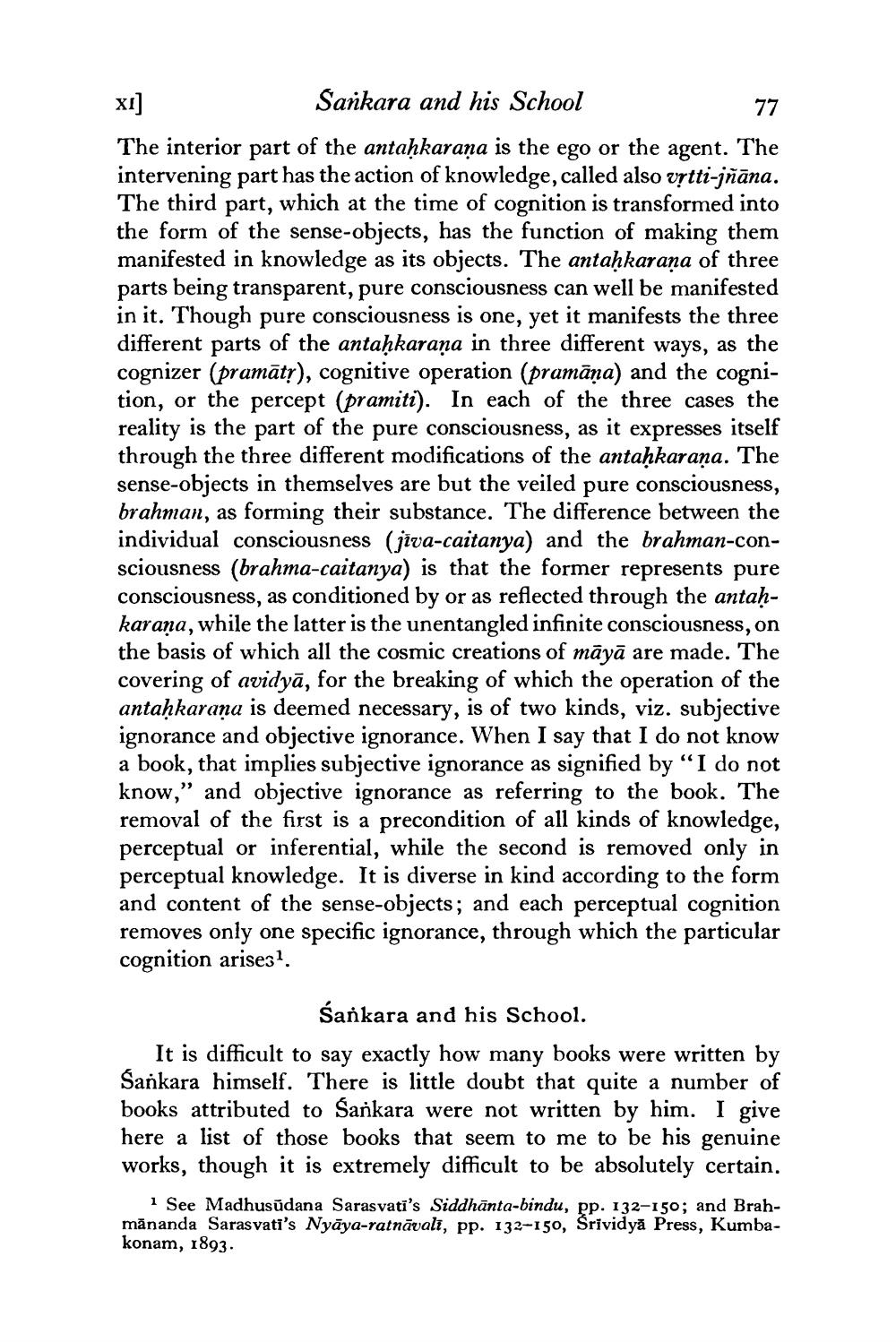________________
77
XI]
Sankara and his School The interior part of the antaḥkaraṇa is the ego or the agent. The intervening part has the action of knowledge, called also vrtti-jñāna. The third part, which at the time of cognition is transformed into the form of the sense-objects, has the function of making them manifested in knowledge as its objects. The antaḥkaraṇa of three parts being transparent, pure consciousness can well be manifested in it. Though pure consciousness is one, yet it manifests the three different parts of the antaḥkaraṇa in three different ways, as the cognizer (pramāt), cognitive operation (pramāņa) and the cognition, or the percept (pramiti). In each of the three cases the reality is the part of the pure consciousness, as it expresses itself through the three different modifications of the antahkarana. The sense-objects in themselves are but the veiled pure consciousness, brahman, as forming their substance. The difference between the individual consciousness (jiva-caitanya) and the brahman-consciousness (brahma-caitanya) is that the former represents pure consciousness, as conditioned by or as reflected through the antahkarana, while the latter is the unentangled infinite consciousness, on the basis of which all the cosmic creations of māyā are made. The covering of avidyā, for the breaking of which the operation of the antahkarana is deemed necessary, is of two kinds, viz. subjective ignorance and objective ignorance. When I say that I do not know a book, that implies subjective ignorance as signified by “I do not know," and objective ignorance as referring to the book. The removal of the first is a precondition of all kinds of knowledge, perceptual or inferential, while the second is removed only in perceptual knowledge. It is diverse in kind according to the form and content of the sense-objects; and each perceptual cognition removes only one specific ignorance, through which the particular cognition arises?
Śankara and his School. It is difficult to say exactly how many books were written by Sankara himself. There is little doubt that quite a number of books attributed to Sankara were not written by him. I give here a list of those books that seem to me to be his genuine works, though it is extremely difficult to be absolutely certain.
i See Madhusūdana Sarasvati's Siddhānta-bindu, pp. 132-150; and Brahmānanda Sarasvati's Nyāya-ratnāvali, pp. 132-150, Srividyă Press, Kumbakonam, 1893




